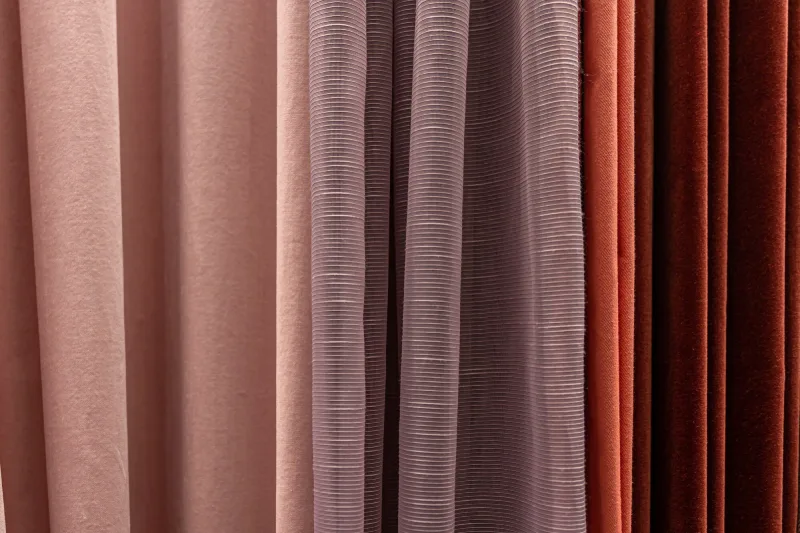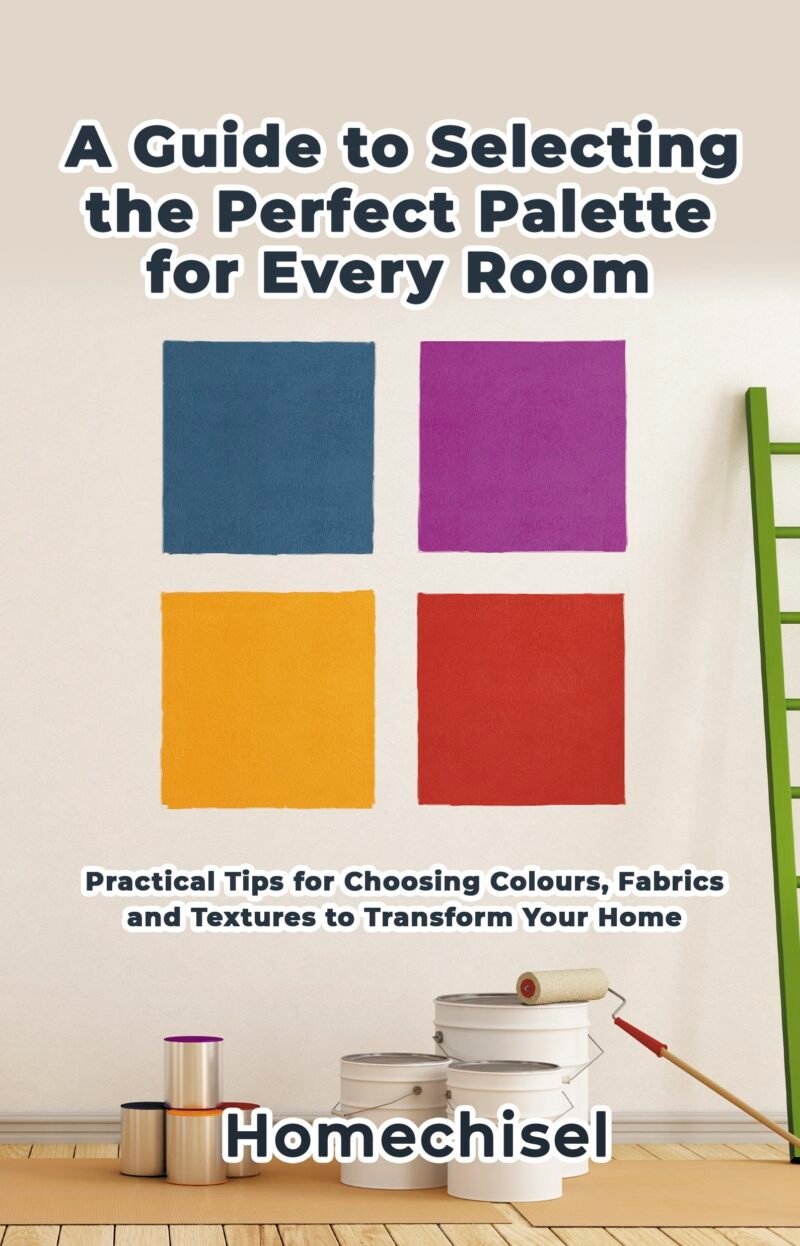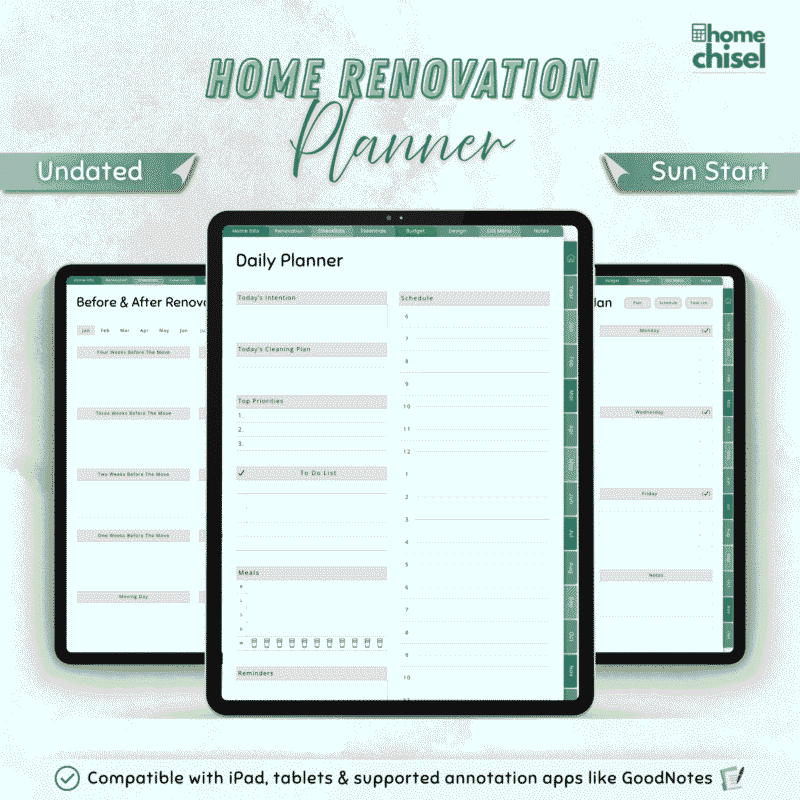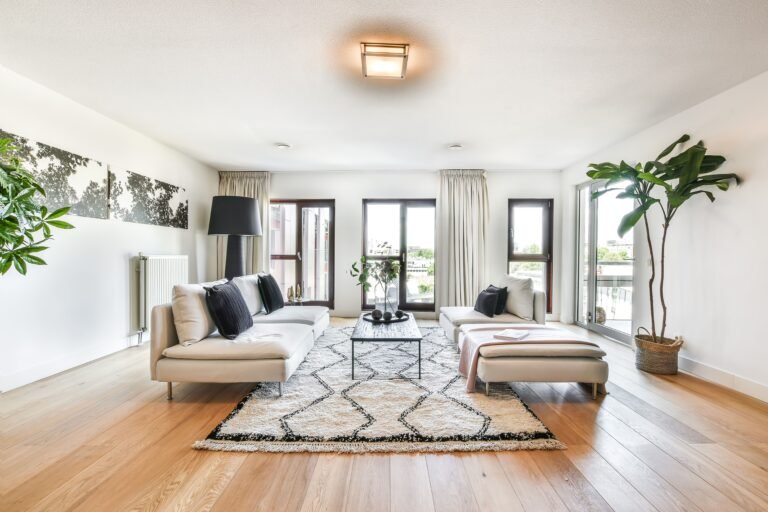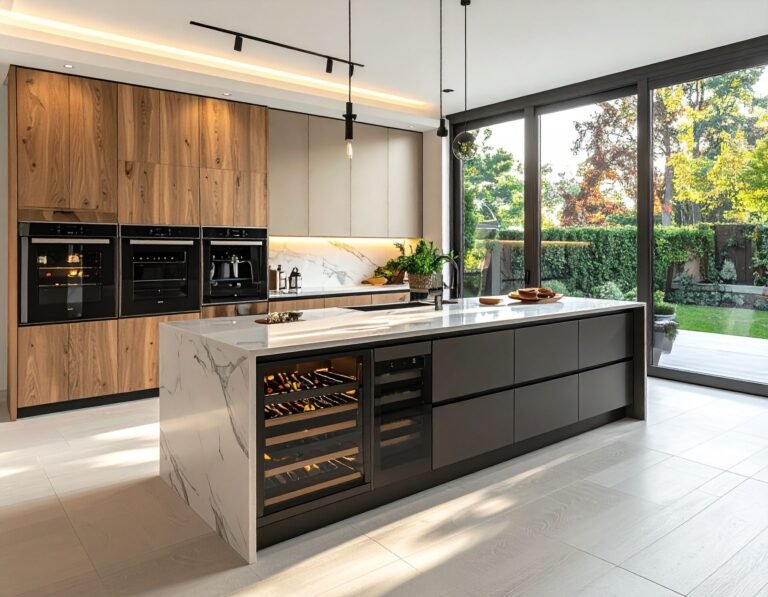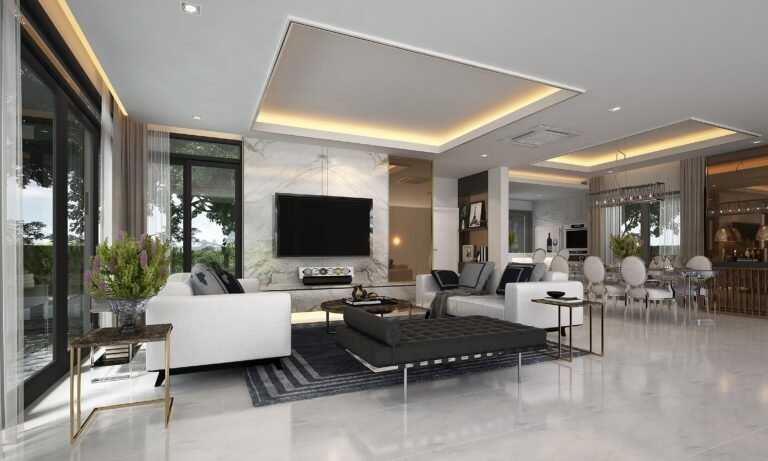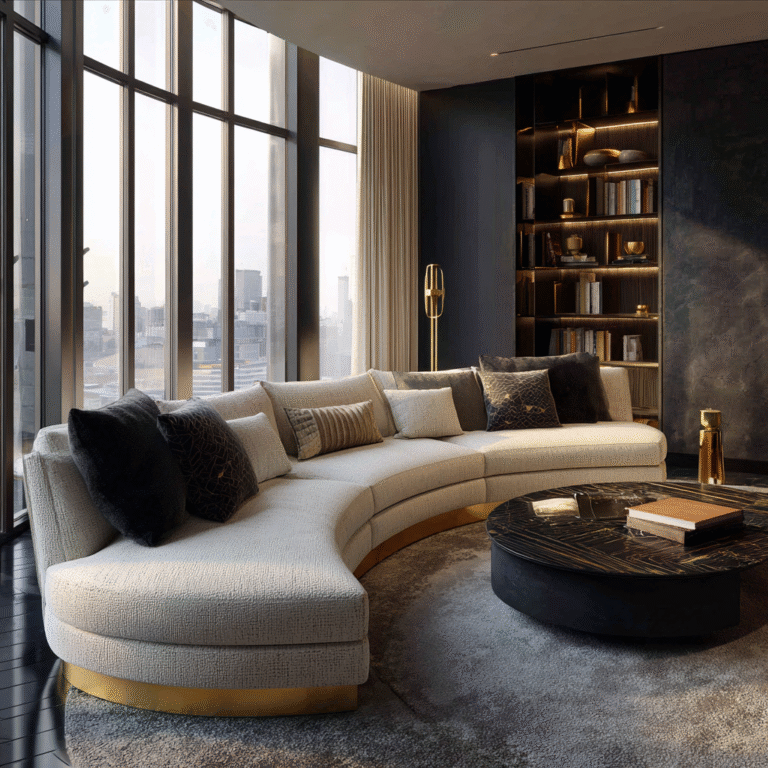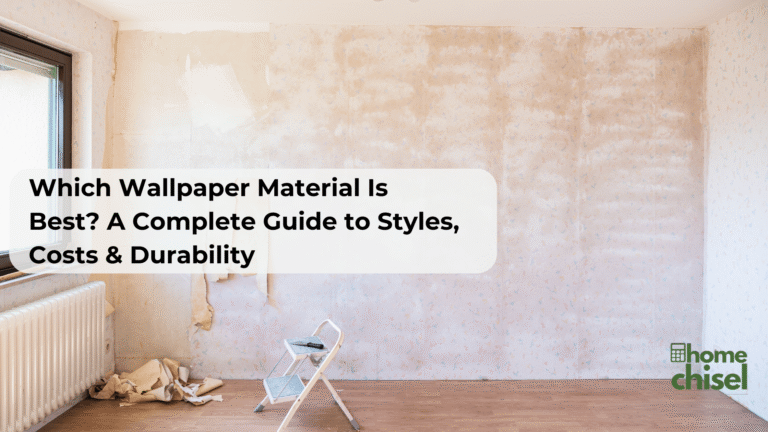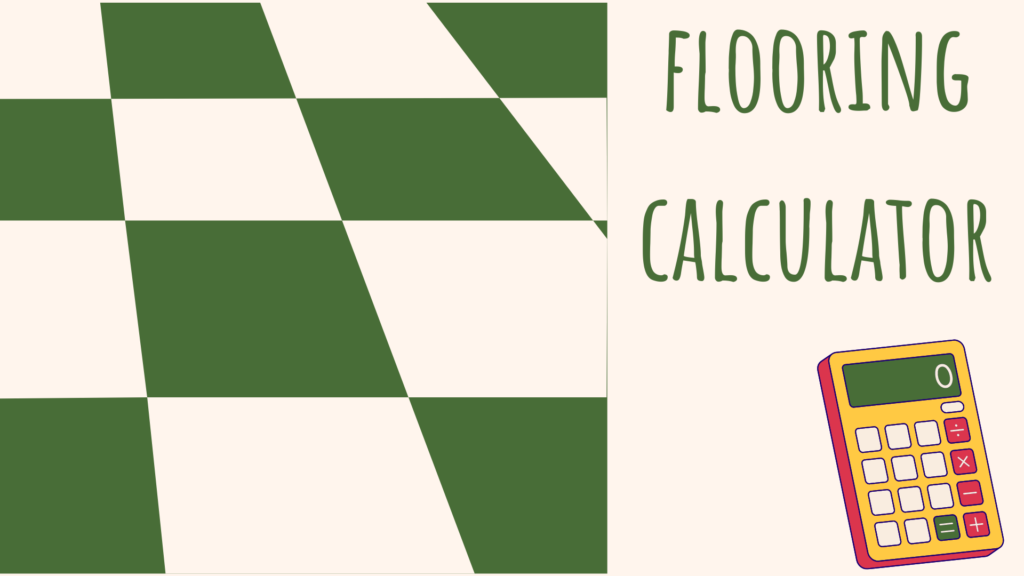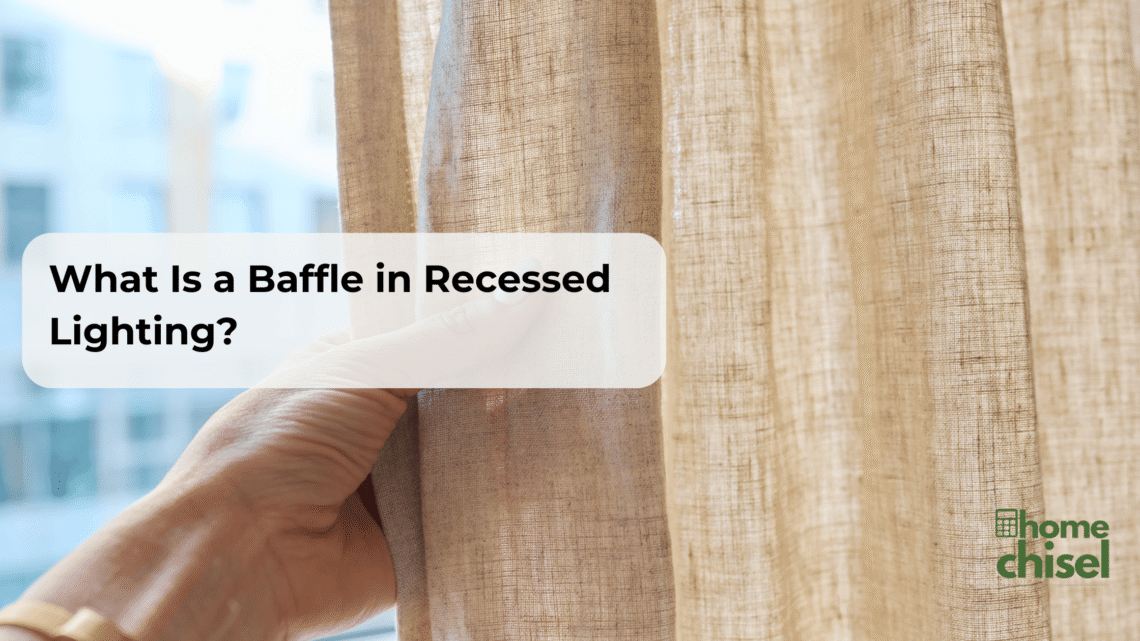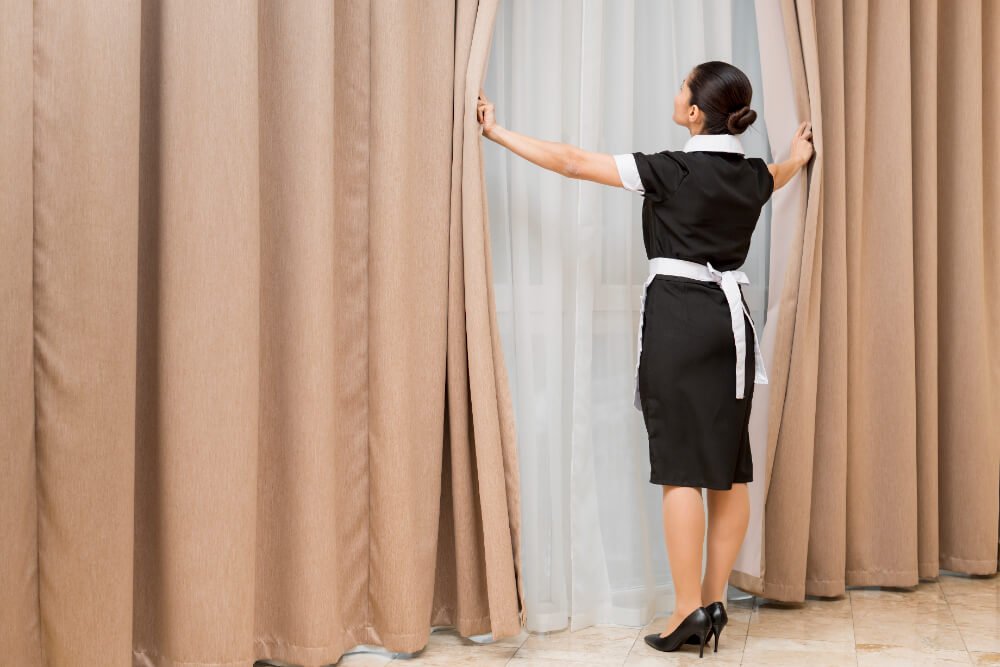Curtains are more than just window coverings; they influence the ambiance, control lighting, and add a layer of privacy. With an overwhelming variety of curtain styles available, making the right choice for each room requires thoughtful consideration. Let’s explore how to match curtain styles with your interior design, room function, and personal taste.
Table of Contents
Understanding Room Requirements
Every room in your home has unique needs. For example:
- Living Rooms: Often the centerpiece of a home, these spaces benefit from statement curtains like pinch pleat or grommet styles to add sophistication. Opt for fabrics like linen or silk for elegance or lightweight sheer curtains for a breezy feel.
- Bedrooms: Blackout curtains or layered curtain panels are ideal for maintaining privacy and blocking out light for a restful sleep.
- Kitchens and Dining Rooms: Cafe curtains or rod pocket curtains work wonderfully in kitchens, offering charm while allowing natural light. Dining rooms might benefit from more formal curtain styles like pinch pleat or tab top designs.
- Bathrooms: Use lightweight fabrics that are moisture-resistant. Shorter curtains, like cafe curtains or even blinds paired with sheer panels, are practical and stylish.
Aligning Curtains with Room Functionality
Matching curtain functionality to each room ensures you meet both aesthetic and practical goals:
- Privacy Needs: Bedrooms and bathrooms require higher privacy levels, making heavier fabrics or blackout curtains a good choice. In contrast, living rooms and kitchens can afford more openness with sheer curtains or lightweight fabrics.
- Lighting Control: Spaces like home offices benefit from versatile options, such as grommet curtains, which are easy to open and close. Living rooms might need layered curtains to adjust light throughout the day.
- Aesthetic Goals: Coordinate your curtains with the room’s color palette and furniture style for a cohesive look. For instance, rustic spaces might suit rod pocket curtains in earth tones, while modern interiors often lean towards sleek grommet or tab-top curtains.
Balancing Style and Practicality
While aesthetics are important, the practical aspects of your curtains should be noticed. Consider details like curtain rod styles, how easily the curtains can be opened and closed, and how they’ll hold up with frequent use. For example:
- High-Traffic Areas: Durable fabrics and easily operable styles like grommet curtains are best.
- Statement Pieces: Heavier fabrics with intricate designs, like pinch pleat curtains, can be a focal point in formal rooms.
- Child-Friendly Spaces: Use washable fabrics and avoid styles that can get easily damaged or tangled, such as excessively long rod pocket curtains.
Real-Life Applications Example
In one of my recent projects, a client wanted a cozy yet chic look for their living room. We paired full-length sheer curtains with blackout curtain panels on a double rod system. During the day, the sheers allowed soft natural light to flood the space. At night, the blackout curtains ensured privacy. For their kitchen, cafe curtains with a rod pocket style added a touch of vintage charm while keeping the windows functional for ventilation.
Room-by-Room Curtain Style Guide
When selecting curtain styles, it’s essential to consider each room’s unique purpose and ambiance. The right curtains can transform a space, offering both aesthetic value and practicality. This guide will explore how to approach curtain styling for various rooms, beginning with the living room.

Living Room Curtains for Elegance Meets Functionality
The living room is often the heart of the home, where style and function must coexist. Curtains in this space should reflect your personality while addressing needs like light control and privacy and complementing your interior design theme. From modern to traditional styles, here are some inspiring curtain ideas.
Modern Style Curtains for Sleek Living Rooms
Modern living rooms benefit from clean lines and understated elegance. Grommet curtains are a popular choice here. Their sleek metal rings slide effortlessly along the curtain rod, creating a tidy, symmetrical look. Lightweight fabrics like linen or polyester blends work well to maintain a minimalist aesthetic.
Farmhouse Style Curtains for Cozy Living Spaces
Farmhouse-inspired living rooms demand curtains that feel warm and inviting. Rod pocket curtains in plaid or solid earth tones are a go-to for this look. Adding tiebacks with rustic embellishments like jute or wood enhances the farmhouse charm.
To ensure your curtains fit perfectly and enhance your room’s design, it’s essential to measure accurately. Refer to our detailed resource: How to Measure Curtains: A Complete Guide for step-by-step instructions.
Application Example:
We selected rod pocket curtains with a soft gingham pattern for a couple who adored the farmhouse aesthetic. The curtains were layered with sheer panels, allowing natural light to filter through while maintaining the room’s cozy vibe. The setup, paired with a wooden curtain rod, perfectly tied their living room together.
Victorian Style Curtains for Luxurious Ambiance
Victorian-style curtains bring drama and opulence to a space. Pinch pleat curtains in luxurious fabrics like velvet or silk are ideal for this aesthetic. Deep, rich colors such as burgundy, emerald green, or gold enhance the grandeur.
Bedroom Curtains for Balancing Comfort and Privacy
Your bedroom is a sanctuary, a place where comfort and privacy take center stage. The curtains you choose can play a pivotal role in setting the mood, whether it’s serene and airy or dark and cozy. Here’s how you can style your bedroom with the right curtain choices.
Blackout Curtains for Better Sleep
If restful sleep is a priority, blackout curtains are a must-have. These heavy-duty curtains block light completely, creating a dark environment that promotes better sleep. They’re especially beneficial for shift workers, light-sensitive sleepers, or those with streetlights outside their windows.
Application Example:
One of my clients was a nurse who worked night shifts. She struggled with sleep due to the sunlight streaming into her bedroom during the day. We installed navy-blue blackout curtains with a subtle geometric pattern. Not only did they provide the darkness she needed, but they also added a layer of sophistication to her room. For added flexibility, we layered the blackout curtains with lightweight sheer panels to allow soft light when desired.
Sheer Curtains for Soft Light and Serenity
For bedrooms that prioritize softness and light, sheer curtains are an excellent choice. They diffuse sunlight, creating a calming, dreamy effect while maintaining a sense of privacy. Sheer curtains pair beautifully with a neutral or pastel color scheme for a tranquil vibe.
Mixing and Layering Curtain Styles for a Bedroom Makeover
Layering curtains is a versatile solution for bedrooms, allowing you to mix textures, colors, and functionality. Pairing blackout curtains with sheer panels offers privacy and light control without compromising on aesthetics. Alternatively, combining a bold patterned curtain with a neutral solid layer can create a striking visual effect.
Application Example:
In one of my renovation projects, a homeowner wanted their master bedroom to feel luxurious but functional. We layered deep gray blackout curtains with a pair of silver-threaded sheer panels. The blackout curtains provided nighttime privacy and light-blocking benefits, while the sheer panels added a touch of elegance during the day. The client loved how they could customize the look depending on the time of day and mood.
Dining Room Curtain Styles
Family and friends gather in dining rooms for meals, celebrations, and conversations. Curtains in this space should create a balance of elegance and functionality, framing the room while offering control over light and privacy. Here’s how to choose the right styles to elevate your dining room.
French Style Curtains
French-style curtains exude sophistication and charm. Often floor-length and made from luxurious fabrics such as velvet or silk, these curtains are perfect for formal dining rooms. Light colors like cream, beige, or soft gray help create an airy and elegant atmosphere.
Application Example:
One of my clients had a formal dining room with tall windows and a grand chandelier. We installed French-style pinch pleat curtains in a pale taupe silk fabric to enhance the space. The result was a dining room that felt like a Parisian estate, enhanced by ornate gold tiebacks and a matching curtain rod. The curtains could be opened wide during meals to let in the evening glow, creating a magical ambiance.
Country-Style Curtains for Rustic Dining Areas
If your dining room leans toward a rustic or country aesthetic, opt for curtains with warm, earthy tones or traditional patterns like gingham, plaid, or florals. Rod pocket curtains or tab-top styles in heavier fabrics like cotton or linen work wonderfully in these settings.
Choosing Lightweight or Heavier Fabrics Based on Lighting Needs
The choice of curtain fabric in a dining room often depends on the room’s lighting and the mood you want to create. Lightweight fabrics like voile or organza work well in rooms with plenty of natural light, while heavier fabrics such as velvet or jacquard are ideal for spaces requiring more privacy or drama.
Curtain Style Considerations for Unique Spaces
Every home has its quirks, from architectural windows to the need for personalized hardware. These unique spaces offer opportunities to enhance your home’s personality with thoughtful curtain choices. Let’s explore some practical and stylish solutions for these scenarios.
Curtain Styles for Arched Windows
Arched windows add character and elegance to a room but can be challenging to style. The key is to highlight their shape while ensuring functional window coverage.
- Option 1: Layered Curtains
- Layer a lightweight sheer curtain with a heavier fabric panel. Use a curved curtain rod that mimics the window’s arch to maintain the architectural flow. This approach preserves the window’s beauty while offering privacy when needed.
- Option 2: Stationary Panels
- Opt for stationary curtain panels that frame the arch without obscuring the view for purely decorative purposes. This is particularly effective in rooms with high ceilings or scenic outdoor views.
Application Example:
In a Mediterranean-style home, we used custom pinch pleat curtains on a curved wrought iron rod for an arched window in the living room. The sheer curtains softened the space while showcasing the window’s elegant curve. The layered blackout panels provided a cozy, intimate vibe for evening gatherings when closed.
Customizing Curtain Rods and Hardware for Modern and Traditional Looks
The curtain rod and hardware you choose are just as important as the curtains themselves. They can subtly emphasize your room’s design style or act as bold statement pieces.
- For Modern Interiors:
- Opt for sleek, minimal rods in matte black or brushed nickel. Pair these with grommet or tab top curtains for a streamlined appearance.
- For Traditional Spaces:
- Choose ornate rods with decorative finials in finishes like brass or antique bronze. Complement these with pinch pleat or rod pocket curtains for a classic touch.
Layering Window Treatments for Functionality and Aesthetics
Layering curtains allows you to blend form and function. Combining sheer and opaque fabrics will enable you to control light and privacy levels while adding depth to your decor.
- Sheer and Blackout Combo:
- A popular choice for bedrooms, this pairing ensures light control and privacy. Sheer panels filter light during the day, while blackout curtains block it entirely at night.
- Roman Shades With Curtains:
- Layering Roman shades beneath curtain panels provides a polished look with added versatility. This setup is ideal for living rooms or offices where you may need varied light levels throughout the day.
Tips for Choosing Curtain Lengths and Hanging Styles
The way curtains are hung, and their length can dramatically affect the look and feel of a room. Understanding your options is key whether you want a sleek, tailored appearance or a more relaxed, flowing style. Here’s a guide to mastering curtain lengths and hanging styles.
Length Styles: Hover, Break, and Puddle Explained
Curtain length is not just about measurements but the mood you want to set. Let’s break down the three most common styles:
- Hover Length: Curtains hover just above the floor, typically leaving about half an inch of space. This style is crisp and modern, perfect for high-traffic areas like living rooms or kitchens where practicality is essential.
- Break Length: These curtains touch the floor lightly, creating a “break” or slight bend. This is a versatile look that works well in both casual and formal spaces.
- Puddle Length: For a luxurious, dramatic effect, opt for curtains that extend several inches onto the floor. This style is ideal for bedrooms or formal dining rooms but requires careful maintenance to avoid dust accumulation.
Deciding between sill-length and floor-length curtains can dramatically impact your room’s aesthetics. Learn more about the differences and applications in our blog: “Sill vs. Floor-Length Curtains: Which Is Right for Your Room?”.
Application Example:
We chose hover-length grommet curtains in a cool gray fabric in a client’s minimalist living room. The clean, tailored look complemented their modern furniture and made cleaning around the windows effortless. For the master bedroom, however, we went for puddle-length velvet curtains in a rich navy blue, adding a touch of opulence and softness to the space.
Rod Pocket Curtains vs. Grommet Curtains: Which Is Best?
The way curtains attach to their rod can impact your window treatment’s look and functionality. Here’s a quick comparison:
- Rod Pocket Curtains: These have a sewn-in pocket that slides directly onto the rod, creating a gathered, romantic look. They’re perfect for traditional or rustic styles but are less convenient to open and close frequently.
- Grommet Curtains: Featuring metal rings that slide easily along the rod, grommet curtains have a sleek, contemporary appearance. They’re ideal for modern spaces or areas where curtains are opened and closed often.
Hanging Curtains: Achieving a Perfectly Opened and Closed Look
Proper hanging techniques can significantly affect how your curtains function and appear when opened or closed.
- High and Wide: Mount the curtain rod several inches above the window frame and extend it beyond its edges. This trick makes windows look larger and allows more light to enter when the curtains are open.
- Double Rods for Layering: Use a double rod system to hang sheer and opaque curtains together. This setup gives you the flexibility to adjust light levels throughout the day.
- Tiebacks and Holdbacks: For a polished look, use tiebacks or holdbacks to gather curtains neatly when they’re open. Choose hardware that complements your curtain rod and room decor.
Application Example:
In a client’s small home office, we installed sheer curtains on a double rod paired with blackout panels. This setup allowed them to enjoy natural light while working during the day and block it out when needed for focus. We used gold-accented tiebacks for their spacious living room to sweep back their floor-length curtains, framing the large windows beautifully.
Selecting the Best Curtain Fabric for Your Room
The choice of fabric can make or break your curtains’ functionality and aesthetic appeal. Whether you’re designing for a cozy living room, a formal dining area, or a serene bedroom, matching the fabric to the room’s purpose and style is crucial. Let’s explore how to select the perfect curtain fabric for every space.
Lightweight Fabrics for Airy, Casual Spaces
Lightweight fabrics like cotton, voile, and linen are ideal for spaces where natural light is welcome and a casual vibe is desired. These fabrics create an airy, open feel, making them perfect for kitchens, sunrooms, and even modern living rooms.
Application Example:
I worked in a small coastal home with a client who wanted their living room to feel breezy and bright. We chose white linen curtains with a rod pocket design. The fabric allowed soft sunlight to filter through, creating a beachy, relaxed atmosphere. The result was a stunning and cohesive design paired with light wooden furniture.
Pro Tip:
Layer sheer, lightweight curtains with blinds or shades to maintain privacy without sacrificing light. This combination provides flexibility while enhancing the room’s texture.
Heavier Fabrics for Formal, Insulated Rooms
Heavier fabrics like velvet, brocade, and thermal-lined cotton are excellent for formal spaces or rooms requiring insulation. These fabrics not only block light but also help reduce noise and keep rooms warmer during winter months.
Application Example:
We selected velvet pinch pleat curtains in a deep emerald green for a historic home with a grand dining room. The luxurious fabric complemented the room’s high ceilings and intricate molding, creating a regal ambiance. The thermal lining kept the space cozy during cold evenings, making it perfect for formal dinners.
Pro Tip:
Use heavier fabrics for larger windows or spaces with dramatic architecture to add weight and sophistication.
Balancing Practicality and Style with Fabric Choices
Practicality doesn’t have to compromise style. Think about the room’s primary purpose and select fabrics accordingly. For example:
- Moisture-Resistant Fabrics: Use treated cotton or polyester blends for bathrooms or kitchens to resist humidity.
- Washable Fabrics: Choose washable options like cotton blends or microfiber for easy maintenance in homes with children or pets.
- Fade-Resistant Fabrics: For sunlit spaces, consider fade-resistant fabrics like acrylic or treated synthetics to ensure longevity.
Application Example:
In a family’s playroom, we chose polyester curtains with a fun geometric print. The fabric was stain-resistant and easy to clean, yet the bold pattern added a playful touch. The parents appreciated the balance of durability and design.
How Does Curtain Size Impact Your Window Treatment’s Effectiveness?
Size is crucial when it comes to achieving the highest potential of your window treatment. Curtains that are too short or too narrow can look out of place, while oversized curtains can overwhelm a room. Always measure your windows carefully and decide on the length and width based on the room’s style and needs.
For more tips, check out Mastering Curtain Sizing: The Ultimate Guide for Perfect Window Treatments.
Styling Your Curtains Like a Designer
Styling your curtains involves more than choosing a fabric and hanging them up. A well-styled curtain can elevate your room’s design, blending seamlessly with its overall aesthetic while adding depth and personality. Here’s how to style your curtains like a seasoned pro.
Creating a Harmonious Look with Interior Design Themes
Your curtains should complement your room’s interior design theme, not compete with it. Choosing the right curtain style, from modern minimalism to rustic charm, can tie the whole look together.
- Modern Spaces: Opt for grommet curtains in solid, neutral colors like white, gray, or black. Pair them with sleek curtain rods in matte black or brushed nickel.
- Rustic or Farmhouse Styles: Rod pocket curtains in plaid or linen with natural textures fit beautifully into cozy, rustic interiors. Add wooden curtain rods for a warm, earthy touch.
- Boho and Eclectic Rooms: Vibrant patterns, fringe, or macramé curtains add personality. Use tiebacks with beads or tassels to enhance the boho vibe.
Application Example:
I styled white tab-top linen curtains on a natural wooden rod in a Scandinavian-inspired living room. The simplicity of the design blended seamlessly with the room’s clean lines and soft textures, allowing the minimalist aesthetic to shine.
Combining Curtain Styles with Other Window Treatments
Layering curtains with other window treatments like blinds, shades, or shutters can enhance functionality and improve the look. This approach is ideal for managing light and privacy.
- Sheer Curtains + Blackout Panels: A popular choice for bedrooms. Sheers diffuse sunlight during the day, while blackout curtains ensure nighttime privacy.
- Roman Shades + Curtains: Roman shades provide light control, while curtain panels add softness and elegance. Perfect for living rooms or dining spaces.
- Wooden Shutters + Cafe Curtains: In kitchens, pair classic wooden shutters with cafe curtains for charm and versatility.
Application Example:
For instance, in a client’s cozy yet functional office space, we layered bamboo Roman shades under off-white curtain panels. The shades brought warmth and texture, while the curtains added softness, creating a productive and stylish workspace.
Modern Style Curtain Rods and Their Impact on Curtain Appeal

The right curtain rod can subtly enhance—or dramatically transform—your window treatment. Modern rods often feature minimalist designs and sleek finishes, making them ideal for contemporary interiors. Let the variety of curtain rods inspire your design choices and add excitement to your home decor project.
- Matte Black Rods: Perfect for industrial or minimalist spaces. Pair with grommet or tab-top curtains for a streamlined look.
- Brushed Nickel Rods: These work well in modern, transitional, or coastal homes. They add a touch of elegance without overwhelming the design.
- Custom Decorative Rods: For those who love bold statements, rods with geometric or abstract finials can add character to the window treatment.
Practical Tips for Curtain Maintenance
Maintaining your curtains is not just about keeping them clean, it’s about ensuring they look great and function well for years. Regular upkeep is a proactive step that helps prevent wear and tear, preserving the beauty and quality of your window treatments. Here’s how to keep your curtains in top shape.
How to Clean and Maintain Your Curtains?
Different fabrics require different cleaning methods. Always check the care label before cleaning, but here are some general guidelines:
- Sheer Curtains: Hand wash or use a delicate cycle with mild detergent. Avoid wringing them out to prevent wrinkles.
- Blackout Curtains: Use a vacuum with a brush attachment to remove dust. Spot-clean any stains with a damp cloth.
- Velvet and Heavier Fabrics: Dry clean to preserve their texture and prevent shrinkage.
Application Example:
In a recent client consultation, the homeowner said they had neglected their velvet curtains for years. We arranged for a professional cleaning service to restore their rich texture. Afterward, we recommended biannual vacuuming to keep them looking pristine.
Curtain Panel Maintenance: Extending the Life of Your Window Treatments
Curtain panels, especially in high-traffic areas, can suffer from wear and tear. Here’s how to keep them looking fresh:
- Rotate Panels: Swap panels between windows periodically to ensure even exposure to sunlight.
- Use Tiebacks: Prevent constant pulling by using tiebacks to hold curtains in place when not in use.
- Inspect Hardware: Check curtain rods and rings for stability. Loose or bent hardware can damage your panels.
Why Investing in Quality Curtain Styles Pays Off Long-Term?
High-quality curtains may come with a higher price tag, but they’re worth the investment. Superior materials and craftsmanship ensure durability, aesthetics, and functionality, giving you peace of mind and confidence in your purchase.
- Durability: Quality fabrics resist fading, fraying, and stretching.
- Better Functionality: Premium blackout curtains or thermal-lined fabrics often outperform cheaper alternatives.
- Timeless Design: Investing in classic styles ensures they remain relevant even as trends change.
Whether you’re layering lightweight sheers for a bright, casual vibe or selecting heavy velvet for a touch of luxury, every choice should reflect the personality and purpose of your home. Don’t be afraid to experiment with textures, colors, and combinations that bring your vision to life. After all, the perfect curtains aren’t just a finishing touch; they’re a defining element that transforms your windows into works of art. Now it’s your turn to start styling with confidence!
Staff picks
-
A Guide to Selecting the Perfect Palette for Every Room: Practical Tips for Choosing Colours, Fabrics and Textures to Transform Your Home
Original price was: 29,00 $.14,00 $Current price is: 14,00 $. -
Digital Home Renovation Planner | Home Project Planner
Original price was: 49,00 $.19,00 $Current price is: 19,00 $.
